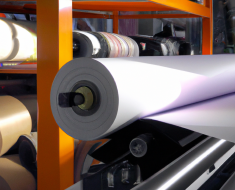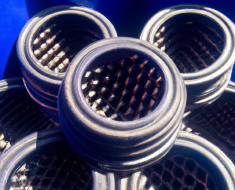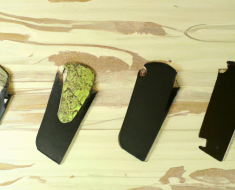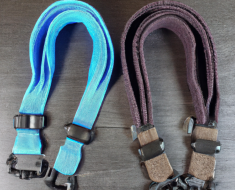“Find the perfect fit for your firearm with our guide to selecting the right pistol brace.”
Comfort and Fit
When it comes to selecting the right pistol brace for your setup, comfort and fit are two crucial factors to consider. A pistol brace that doesn’t fit properly or is uncomfortable to use can significantly impact your shooting experience. In this article, we will discuss how to ensure that you select a pistol brace that provides both comfort and proper fit.
First and foremost, it’s important to consider the size and shape of your arm when selecting a pistol brace. Pistol braces come in various sizes and designs, so it’s essential to choose one that fits comfortably on your arm. A brace that is too tight or too loose can cause discomfort and affect your shooting accuracy. It’s recommended to try out different braces before making a final decision to ensure that you find one that fits well.
Additionally, consider the material of the pistol brace. Some braces are made of hard plastic, while others are constructed from soft rubber or foam. The material of the brace can impact how comfortable it feels on your arm. Soft materials are often more comfortable for extended use, while hard plastic braces may be more durable but less comfortable. Take into account how long you plan on using the brace and what type of shooting activities you will be participating in when choosing the material.
Another factor to consider is the adjustability of the pistol brace. A brace that can be adjusted for length, angle, and position can help ensure a proper fit and maximum comfort. Adjustable braces allow you to customize the fit to your specific arm size and shooting style, resulting in a more comfortable shooting experience. Look for braces with multiple adjustment points so that you can fine-tune the fit to your liking.
It’s also essential to consider the weight of the pistol brace. A heavy brace can cause fatigue and discomfort during extended shooting sessions. Opt for a lightweight brace that won’t add unnecessary weight to your setup. Many manufacturers offer lightweight options that provide stability without adding bulk.
When trying out different pistol braces, pay attention to how they feel on your arm. The brace should feel secure and stable without being too tight or restrictive. It should allow for natural movement while providing support where needed. If a brace feels uncomfortable or causes pain after extended use, it may not be the right fit for you.
In conclusion, selecting the right pistol brace for your setup is crucial for ensuring comfort and fit during shooting activities. Consider factors such as size, material, adjustability, and weight when choosing a pistol brace. Take the time to try out different options and find one that feels comfortable on your arm. A properly fitting pistol brace can enhance your shooting experience and improve accuracy. Don’t overlook the importance of comfort and fit when selecting a pistol brace for your setup.
Adjustability and Compatibility
When it comes to selecting the right pistol brace for your setup, there are a few key factors to consider. One of the most important aspects to take into account is adjustability. A pistol brace that is easily adjustable can make a world of difference in terms of comfort and functionality.
Adjustability allows you to customize the fit of the brace to your specific needs and preferences. This can be especially important if you have a unique shooting style or if you plan on using the brace for different types of shooting activities. Look for a brace that offers multiple points of adjustment, such as length of pull and cheek rest height, to ensure a proper fit.
Another important factor to consider when selecting a pistol brace is compatibility. Not all braces are compatible with every firearm, so it’s crucial to do your research and make sure that the brace you choose will work with your specific setup. Some braces are designed for specific models or brands of firearms, while others are more universal in their compatibility.
If you’re unsure about whether a particular brace will work with your firearm, don’t hesitate to reach out to the manufacturer for clarification. They should be able to provide you with guidance on which braces are compatible with your specific setup.
In addition to adjustability and compatibility, it’s also important to consider the overall design and construction of the pistol brace. Look for a brace that is durable and well-made, as this will ensure that it holds up over time and provides reliable support when shooting.
Some braces are made from high-quality materials such as aluminum or polymer, while others may feature additional padding or ergonomic design elements for added comfort. Consider how you plan on using the brace and choose a design that best suits your needs.
When it comes to selecting the right pistol brace for your setup, there are a variety of options available on the market. Take the time to research different brands and models, read reviews from other users, and consider factors such as adjustability, compatibility, and overall design before making your final decision.
Ultimately, the best pistol brace for you will be one that fits comfortably, works well with your firearm, and meets your specific shooting needs. By taking these factors into consideration and doing your homework before making a purchase, you can ensure that you select a high-quality pistol brace that enhances your shooting experience.
Stability and Support
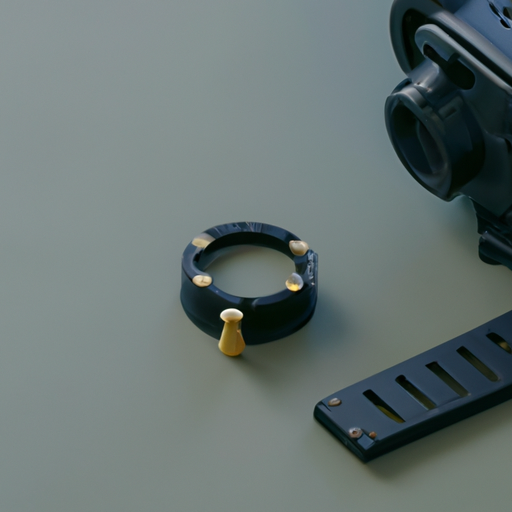
When it comes to selecting the right pistol brace for your setup, stability and support are crucial factors to consider. A pistol brace is an accessory that attaches to the back of a handgun, providing additional support for the shooter’s arm. This can help improve accuracy and control, especially when firing multiple shots in quick succession. With so many options available on the market, it can be overwhelming to choose the right one for your specific needs. In this article, we will discuss how stability and support play a key role in selecting the right pistol brace for your setup.
First and foremost, stability is essential when choosing a pistol brace. A stable brace will help reduce recoil and muzzle rise, allowing for more accurate and controlled shooting. When evaluating different braces, look for ones that are made from high-quality materials such as aluminum or polymer, as these will provide the most stability. Additionally, consider the design of the brace – some braces have adjustable straps or hinges that allow for a customized fit, which can further enhance stability.
Support is another important factor to consider when selecting a pistol brace. A brace that offers proper support will help distribute the weight of the firearm evenly across your arm, reducing fatigue during extended shooting sessions. Look for braces that are padded or have ergonomic designs that contour to your arm for maximum comfort and support. It’s also important to consider the length of the brace – a longer brace may provide more support but could be less maneuverable, while a shorter brace may offer less support but greater flexibility.
When choosing a pistol brace for your setup, it’s important to consider both stability and support to ensure optimal performance. A stable and supportive brace can make a significant difference in your shooting accuracy and overall experience at the range. Remember to test out different braces before making a final decision, as what works best for one shooter may not work as well for another.
In conclusion, stability and support are essential factors to consider when selecting the right pistol brace for your setup. By choosing a brace that offers both stability and support, you can improve your shooting accuracy and control while minimizing fatigue during extended shooting sessions. Take the time to research different options and test out various braces to find the one that best fits your needs. With the right pistol brace, you can enhance your shooting experience and take your skills to the next level.
Material and Construction
When it comes to selecting the right pistol brace for your setup, one of the most important factors to consider is the material and construction of the brace. The material and construction of a pistol brace can greatly affect its durability, comfort, and performance. In this article, we will discuss the different materials and constructions commonly used in pistol braces, as well as the pros and cons of each.
One of the most common materials used in pistol braces is polymer. Polymer pistol braces are lightweight, durable, and affordable. They are also resistant to corrosion and impact, making them a popular choice among shooters who are looking for a budget-friendly option. However, polymer braces may not offer as much stability or support as other materials, so they may not be ideal for heavy-duty use.
Another popular material used in pistol braces is aluminum. Aluminum pistol braces are known for their strength, rigidity, and stability. They are also lightweight and resistant to corrosion, making them a great choice for shooters who want a durable and reliable brace. However, aluminum braces can be more expensive than polymer braces, so they may not be the best option for shooters on a budget.
Carbon fiber is another material that is becoming increasingly popular in pistol brace construction. Carbon fiber braces are incredibly lightweight, strong, and rigid. They offer excellent stability and support, making them a great choice for shooters who prioritize performance. However, carbon fiber braces tend to be more expensive than polymer or aluminum braces, so they may not be suitable for all budgets.
In addition to the material used in a pistol brace, it is also important to consider the construction of the brace. Some pistol braces feature adjustable straps or pads that allow you to customize the fit and feel of the brace to your liking. These adjustable features can greatly enhance comfort and stability while shooting.
Other pistol braces feature folding or collapsible designs that allow you to easily store or transport your firearm. These designs can be especially useful for shooters who need to move quickly or have limited storage space.
Ultimately, the best material and construction for your pistol brace will depend on your individual needs and preferences. If you prioritize durability and affordability, a polymer brace may be the best option for you. If you prioritize performance and stability, a carbon fiber or aluminum brace may be more suitable.
Regardless of the material and construction you choose, it is important to carefully consider your options before making a purchase. Take the time to research different brands and models, read reviews from other shooters, and try out different braces if possible. By selecting the right pistol brace for your setup, you can enhance your shooting experience and improve your accuracy and control on the range.
Legal Considerations
When it comes to selecting the right pistol brace for your setup, there are a few legal considerations that you need to keep in mind. The first thing to understand is that pistol braces are considered an accessory under federal law, not a firearm. This means that they are not subject to the same regulations as firearms, but there are still some rules and guidelines that you need to follow.
One of the most important legal considerations when choosing a pistol brace is whether or not it is considered a stabilizing brace by the ATF. A stabilizing brace is designed to help shooters stabilize their pistols while shooting, and if a brace is classified as a stabilizing brace by the ATF, it is subject to certain restrictions.
In 2015, the ATF issued an open letter stating that shouldering a pistol brace could potentially turn a pistol into a short-barreled rifle (SBR), which is regulated under the National Firearms Act (NFA). This caused confusion and concern among gun owners who were unsure if they were using their pistol braces legally.
In response to this confusion, the ATF issued another open letter in 2017 clarifying their position on pistol braces. They stated that shouldering a pistol brace does not automatically make a pistol into an SBR, as long as the brace was originally designed to be used as a forearm brace and not as a shoulder stock.
Despite this clarification, it is important to exercise caution when using a pistol brace. If you are unsure about the legality of shouldering your brace, it is best to consult with an attorney or firearms expert to ensure that you are in compliance with federal regulations.
Another legal consideration when selecting a pistol brace is whether or not it is compatible with your specific firearm. Some braces are designed for specific models of pistols, while others are more universal and can be attached to a variety of firearms. It is important to make sure that the brace you choose fits properly on your firearm and does not interfere with its operation.
Additionally, some states have their own regulations regarding pistol braces. Before purchasing a brace, be sure to familiarize yourself with the laws in your state to ensure that you are in compliance with all local regulations.
In conclusion, selecting the right pistol brace for your setup involves considering several legal factors. It is important to understand the classification of the brace by the ATF, ensure compatibility with your firearm, and be aware of any state-specific regulations. By doing your research and consulting with experts if necessary, you can select a pistol brace that enhances your shooting experience while remaining in compliance with all applicable laws.



